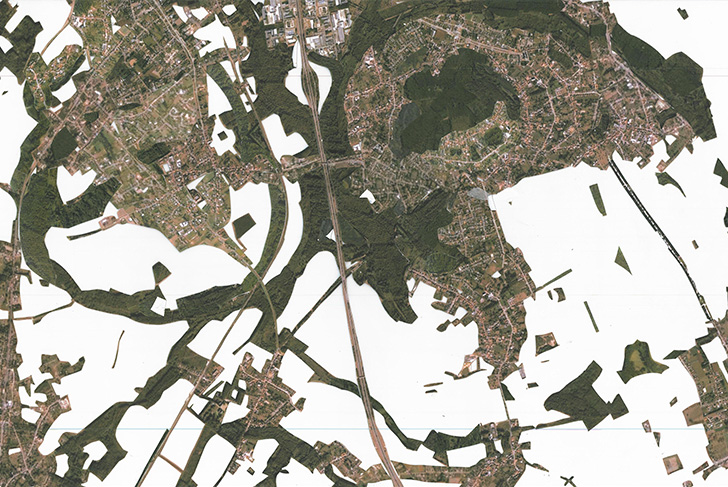The objective, first and foremost, is to see, and to continue to learn how to see, the landscapes which surround us; to understand the mechanisms producing them, decipher how they have evolved, and determine what challenges they present. Today the sole approach to the landscape is often that of its conservation, while an interest in its transformation is immediately viewed as suspect.
What interests us, however, is precisely the observation of these transformations, these projects.
These observations are substantiated through the manipulation of images, the assembly of collages. This process of manipulation takes us beyond strict analysis to a place where we can begin to envision further transformations and projects.
Aerial photographs provide the material. A collection of images is projected, deciphered during presentation, and classified into several broad themes such as the peripheries of cities, cities and geography, landscape and infrastructure,the diffuse city, landscape and public spaces, or ways of inhabiting the landscape.
Each presentation gives rise to experiments. Taking the aerial images of a landscape as their starting point, the students produce all kinds of collages. These drawings provide both the material of observation as well as the opportunity to conceive of how these sites will evolve in the future. Basic subjects are put forward for exploration, including defining the city, positioning a railway, creating a network of public spaces, or organizing a neighborhood. These drawings, in metamorphosis, are photographed in order to compose a sort of mosaic of the many possible projects.
The ethical dimension is important. What kind of landscape for what kind of society? How should we inhabit a territory? What kind of city for tomorrow?
